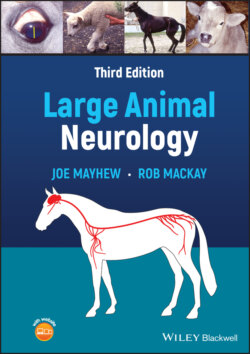Читать книгу Large Animal Neurology - Joe Mayhew - Страница 50
Interpretation of signs of peripheral nerve disease
ОглавлениеFor an accurate interpretation of signs of peripheral nerve disease, some consideration must be given to the neuropathological classification of damage to peripheral nerves that can result in degrees of loss of function termed neurapraxia, axonotmesis, and neurotmesis.
With loss of somatic efferent motor innervation due to axonal or whole nerve fiber damage, there is muscle atrophy, which occurs relatively rapidly although in large patients it may take up to 2 weeks to become clinically prominent. Electromyographic changes indicating denervation of muscle may take even longer and may take 3–4 weeks to become prominent in the horse. Surprisingly, disuse atrophy appears to occur quite rapidly in the (fit) horse and therefore distinguishing neurogenic atrophy from disuse atrophy clinically can be blurred. A good example of the significance of this would be an unusual asymmetric hindlimb gait abnormality in a horse with accompanying gluteal muscle asymmetry. Unless marked, such asymmetric muscle atrophy should be taken as evidence for disuse due to lameness until proven otherwise.
